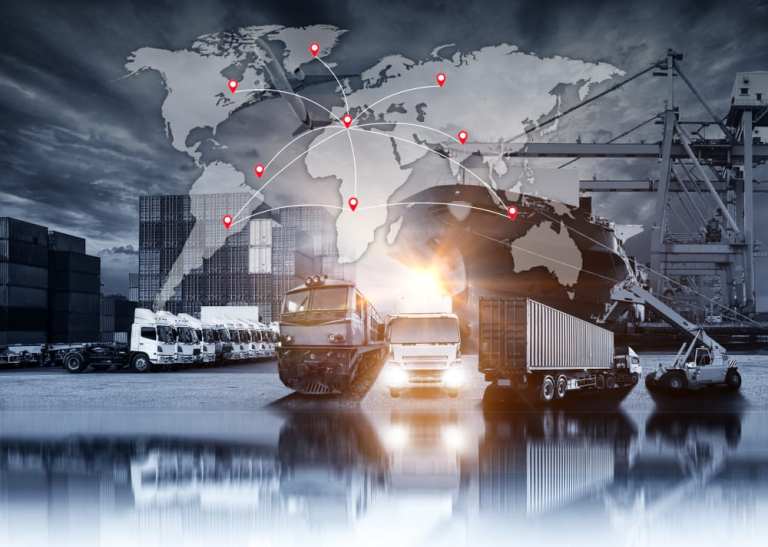Supply chains aren’t so much chains as they are intricate webs of connections between business partners: buyers, suppliers, logistics providers, banks, customs agents, FinTech platforms — the list goes on.
At the macro level, one of the largest challenges in supply chain management is getting every one of those chain links on the same page. Payments cannot be made until goods are delivered and proof is sent that the delivery adhered to its contract. Invoices cannot be financed until financiers see evidence of those contracts, and gain visibility into the progress of those transactions.
Complicating matters is the persistence of paper documents in supply chains, making it difficult for relevant parties to quickly obtain the information they need to make progress. According to Eric Meek, CEO of FreightRover, that means even seemingly straightforward efforts to access information are complicated.
“There are a ton of stress points inside of the process flow,” Meek told PYMNTS in a recent interview. “They can come from things that are really simple, when you think about it. The three-way match of contract with delivery and an invoice to create validation of what happened during a transaction, for example.”
Meek described this challenge as an issue of finding the “one-to-many relationship.” Solving for this challenge, he said, means introducing a single point through which all relevant data and documents can be passed. For a company like FreightRover, with its affiliate Rover180 providing supply chain finance and factoring solutions, having that one-to-many connection allows for more accurate data and faster financing for companies.
FreightRover recently turned toward artificial intelligence (AI) and machine learning to implement that point of connectivity. Last month, the company announced the acquisition of Vemity, an AI and machine learning company that FreightRover said can deploy the technology necessary to accelerate B2B payments and financing in supply chains.
Advertisement: Scroll to Continue
“There are all of these granular and disparate data points,” Meek explained. “With Vemity, we can make those process flows feel very streamlined, and speed up the process for all parties involved, improve accuracy of data and make it an overall better process.”
The transportation and logistics sector is one area of the supply chain that is particularly attractive to AI disruption, thanks to the industry’s fragmentation. There are many players, each at different stages of digitization, with different levels of technological maturity. When a transportation company provides proof-of-delivery in a paper document that is scanned and faxed to an organization, it’s difficult for relevant parties like accounts payable and financing firms to quickly see that information, too.
Contract management is another area that experiences significant pain points in the supply chain, he continued. While companies must ensure that contracts have been adhered to so as to pay suppliers, the department that makes those payments (accounts payable) is separate from the department that understands the ins and outs of the contracts (the legal department).
In the long term, application programming interface (API) connectivity shows promise of facilitating the interconnectivity of data between departments and across business partners, said Meek. However, in the more immediate term, AI may offer the ability to aggregate documents, regardless of format, as well as digitize and analyze data, and ensure all relevant parties have the information they need to move forward.
Meek said he also sees opportunity in using data from trucks’ electronic logging devices (ELDs), which can provide indirect verification that a truck moved physically from one point to another. Rather than manually verifying with Walmart personnel that goods were loaded up at the dock, supply chain financiers can use that information to verify movement of goods, and adherence to contracts linked to the invoices being financed.
Considering the vast range of friction points, the opportunities for AI and machine learning to facilitate data aggregation and analysis are just as wide-ranging. According to Meek, AI’s disruption to B2B payments and supply chain finance is likely in the ecosystem’s future, considering the ability for companies like Rover180 to integrate AI to accelerate invoice or supply chain financing. In essence, companies can receive funds more quickly without having to understand how it occurred — and without having to change their behavior in how they generate and send documents.
That opens other doors for third-party providers like FreightRover to integrate value-added services, like contract management and vendor insurance management — other areas of supply chain management that are similarly reliant on the seamless movement of data and documents between parties. What’s less clear, however, is the path of AI in organizations’ own back offices.
“How companies look internally at how to use AI and machine learning to improve internal processes will be slower-moving,” Meek said. “A lot of people are hesitant on change inside process flows. They get really nervous about storage; they’ve become really passive.”
He added that organizations often embrace the “if it’s not broke, don’t fix it” mentality, which adds another barrier to companies embracing technology like AI to more deeply interconnect with business partners.




